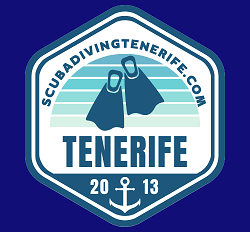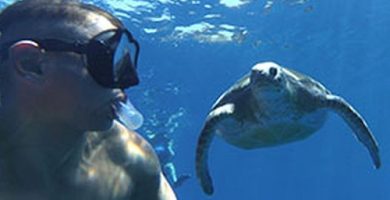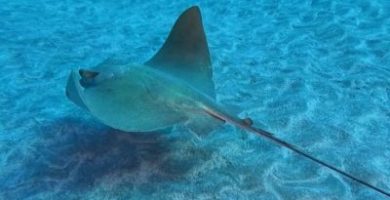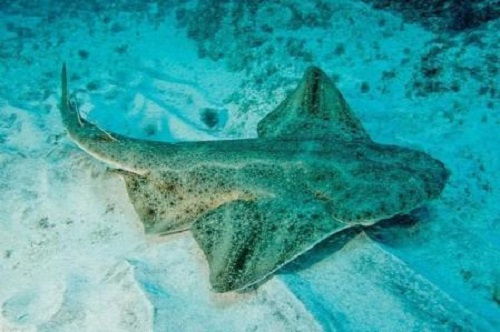
We will enter the world of the angel sharks, a species of fish that inhabits the warm waters of the Canary archipelago.
We tell you all about angel sharks in Tenerife: from their physical characteristics and feeding habits, to the best places to spot them and how to photograph them without putting your safety at risk.
Where can I see Tenerife angelsharks?
Angelsharks are wild animals that move along the coast of Tenerife, although on these dives you are more likely to see them:

Diving in Abades
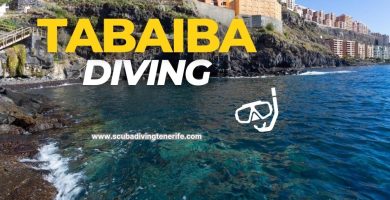
Diving in Tabaiba

Diving in Bufadero (Palm-Mar)

Diving in Radazul

Diving in Bocacangrejo

Diving in El Porís
What is the angelshark, angel shark or angelfish?
The angelshark (Squatina squatina) is a species of shark of the Squatinidae family found in the Atlantic Ocean off the coasts of the Canary Islands and Morocco.
It is often referred to as the “Moroccan angelshark” or “sand angelshark” due to its living habits and stingray-like appearance.
This species is a nocturnal predator that feeds mainly on crustaceans and fish.
What is the best time to see angel sharks in Tenerife?
The angelshark can be observed in Tenerife all year round, although it is easier to see during the summer months, when the water is warmer and visibility is better.
Keep in mind that this species is more active at night, so it is recommended to make observations at dusk or dawn.
Characteristics and curiosities of angelsharks
- Unique appearance: The angelshark has a flat, broad body, with a disk-like shape. Its head is broad and flattened, with two large dorsal and broad pectoral fins that give it the appearance of “wings”.
- Impressive size: Angelsharks can reach a length of up to 3 meters and a weight of approximately 80 kilograms, making them one of the largest species of stingrays.
- Efficient camouflage: Their coloration varies from brown and grayish tones to lighter shades, which allows them to camouflage efficiently on the seabed. This adaptation helps them to stalk their prey and avoid detection by predators.
- Preferred habitat: Angelsharks are found mainly in shallow coastal areas, such as estuaries, bays and sandy or muddy bottoms. They can also be found near reefs and in deeper waters.
- Opportunistic feeding: They are nocturnal predators and feed on a variety of prey, including fish, crustaceans and cephalopods. They use their extensible jaws to catch their prey and suck them into their mouths.
- Ovoviviparous reproduction: Angelshark females give birth to live young after a gestation period of approximately 9 months. Each litter may contain 7 to 25 young, which are independent at birth.
- Endangered species: Unfortunately, the angelshark is critically endangered due to overfishing and habitat degradation. It has been the subject of conservation and protection measures in several countries.
Conservation status of the Tenerife angelshark
The Tenerife Angelshark is classified as “near threatened” on the Red List of the International Union for Conservation of Nature (IUCN).
Its population has declined in recent decades due to intensive fishing and the degradation of its natural habitat.
For this reason, their capture is regulated and measures have been established for their protection.
How to observe and photograph the angel shark in Tenerife?
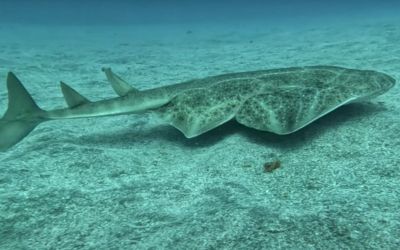
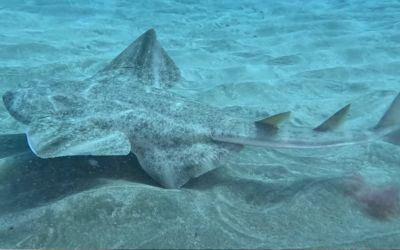
If you wish to photograph the Tenerife Angelshark, it is advisable to use a waterproof camera or a protective housing to protect your equipment.
Make sure you have good balance and a stable technique to avoid camera shake during the shot.
It is advisable to approach the animal slowly and photograph it from several angles, taking advantage of natural light to highlight its texture and details.
It is important to observe the Tenerife angelshark from a safe distance and not to interfere with its natural behavior.
Animals should not be touched or disturbed, as this may cause stress and affect their health.
In addition, their natural habitat should be respected and no garbage or polluting materials should be thrown into the waters where they are found.
